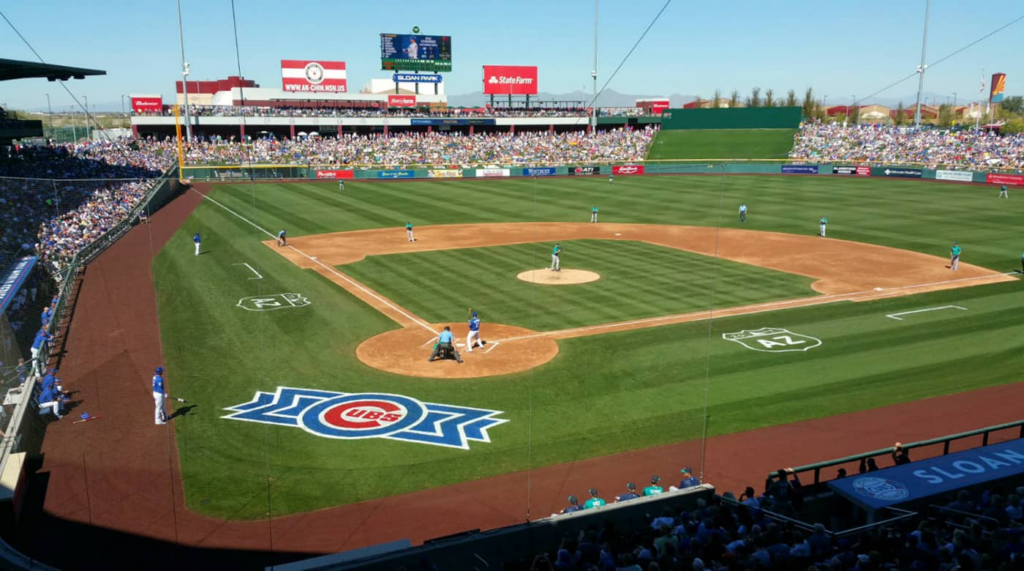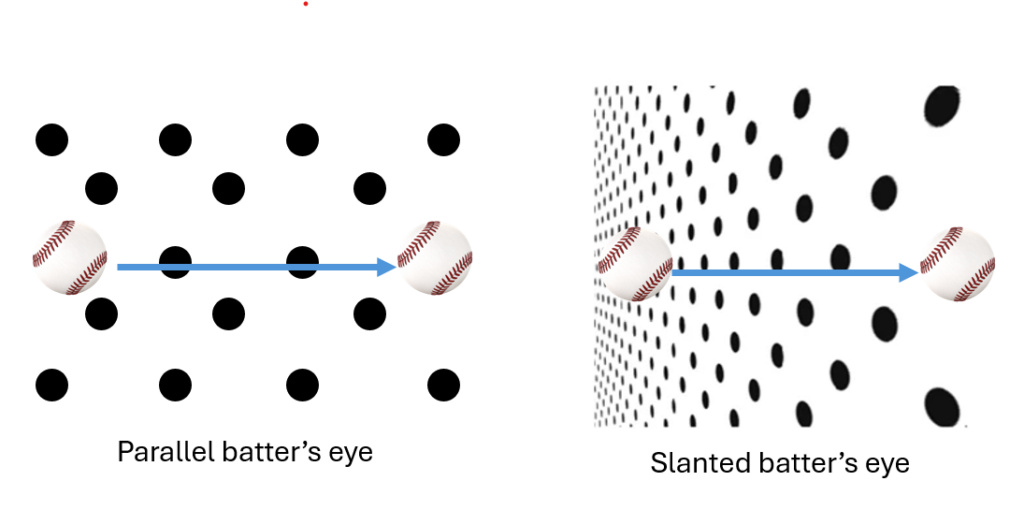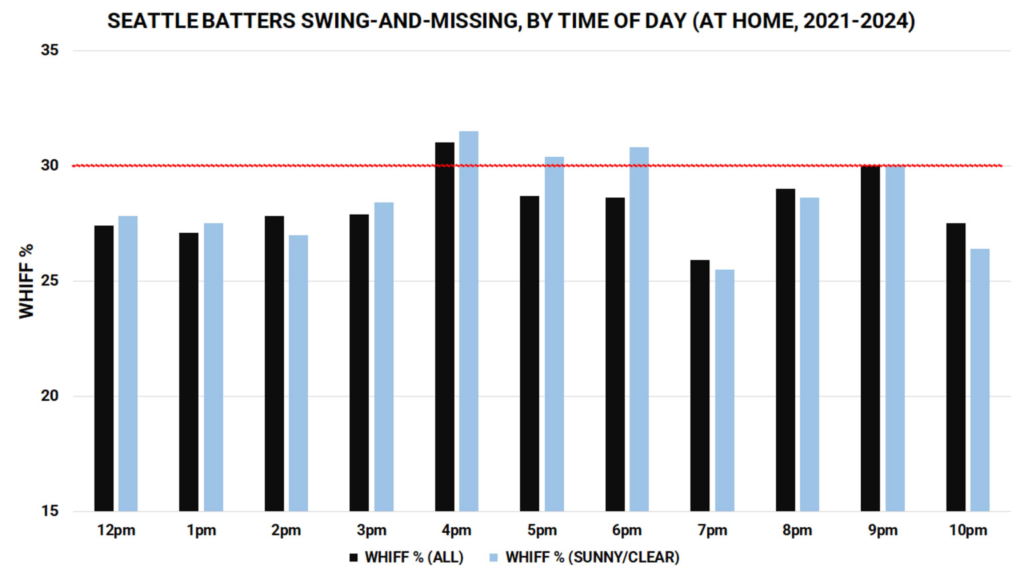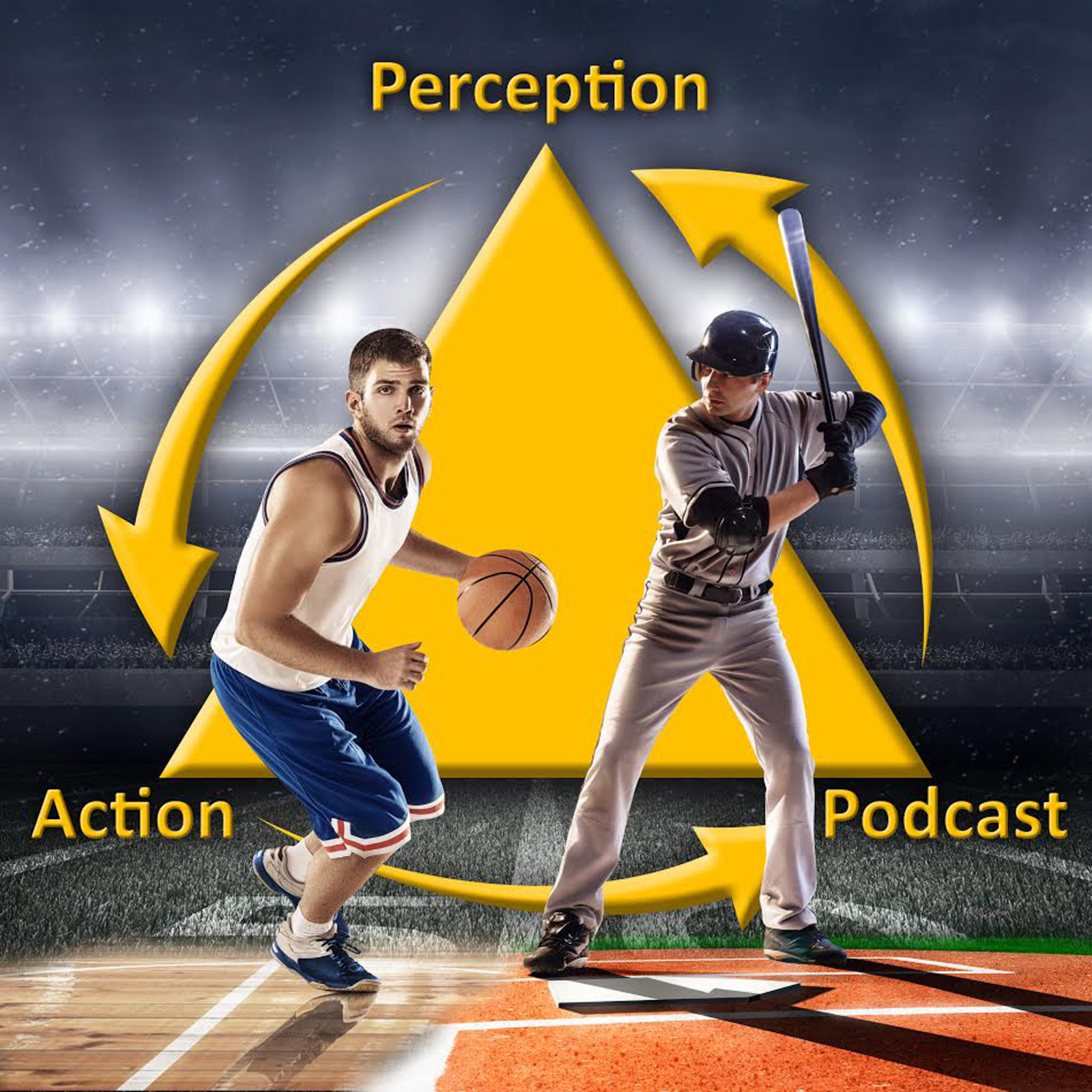As documented in this great recent article by Mike Petriello, Seattle’s T Mobile Park is the most difficult place to hit in all of baseball. In fact, it is now right up there with Colorado as the most extreme ballpark in MLB – as much as Coors field’s altitude and large dimensions help hitters, T Mobile hurts them almost as much! This can be seen in this figure from Mike’s article:

There are many explanations that have been given for this effect including weather-related ones (marine layer, wind, higher gravity in the PNW), glare from the sun, etc. but the one I want to focus on today is the idea that there is something about Seattle’s batter’s eye that makes it more difficult for hitters to pick up the flight of the ball. Why might this be the case?
Perceptual analysis of Seattle’s batter’s eye
For those who don’t know, the “batter’s eye” is a part of a ballpark that all stadiums have deliberately designed to improve the hitter’s view of the ball. It typically involves a dark surface (to maximize the contrast with the white ball), created either by covering a bunch of the seats in centerfield, planting grass there, or by putting a black surface (i.e. wall) in centerfield. For example, here is the batter’s eye (a patch of grass and dark green wall) in my current home park I am working in with the Cubs, Sloan Park in Mesa, AZ.

Below are two different views of the batter’s eye (a black wall) at T Mobile park.


What is unusual about the batter’s eye in Seattle is its orientation – it is not parallel to home plate. Instead, it slants away from home plate as you move from right to left. NOTE: this is not the only MLB park that has a slanted batter’s eye (Mike notes that both Clevland and Baltimore have similar layouts) – more on this later. Many hitters have complained that this makes hitting more difficult, most recently Teoscar Hernandez now with the Dodgers:
“I couldn’t feel good at the plate at home. I talk to a lot of players around the league, and they feel the same thing when they go to Seattle and play two or three games over there,” “They had the same feeling. So it was not only me.” “It was a little crooked,” Hernández added. “I didn’t feel really straight with the pitcher, for some reason. I moved everywhere in the batter’s box and tried to fix it, but I couldn’t figure it out.”
Why might a slanted batter’s eye create a problem for hitters?
My first thought was that Seattle may have inadvertently created an Ames room! An Ames room is a visual illusion you can see at many Science museums around the country. It is a room constructed to look like a typical room (i.e., the back wall is parallel to the viewer) but in reality, the back wall slants away from you. This creates the illusion, that one of the people standing against the back wall is freakishly large…


We use this illusion when teaching Perception classes, to illustrate the strong link between our perception of depth and size. The girl on the right is actually much closer to you than the one on the left (so her image on your retina is larger). But you perceive the two girls to be at the same distance. The only way an object can have a larger image on your eye and be at the same distance is if it is physically larger. Thus the illusion – because our depth perception is tricked, so is our perception of size! Fun!
Let”s think about how this might affect the perception of ball movement. Below I have illustrated a ball moving across a parallel batter’s eye (left) and one slanted in depth from right to left (right). To achieve this I used an effect first studied by none other than JJ Gibson – texture gradient. As a surface gets further away from us, the texture elements on it (the black circles in the figure below) get closer together. This is why “the grass is always greener on the other side of the fence” – blades of grass (texture) are perceptually more tightly packed on your neighbor’s lawn because it is further away than yours – so you don’t see all the imperfections in between! Note, how the ball on the right appears to come out at you (even though the images of the ball and the arrow are the same in the two images) i.e., there is an illusion of a change in its depth. It’s not quite the same effect as the Ames room but it’s the same basic principle.

One can imagine how this might distort a batter’s perception of the trajectory of an oncoming pitch and make them swing and miss more often. But with a small amount of exposure (e.g. during batting practice) everything we know about visual-motor control suggests that the batter should easily be able to re-calibrate to this and make it so this misperception of depth is not an issue. A couple of swings and misses should sort it out! For example, people can quickly adapt to the visual distortion caused by wearing prism glasses, which initially makes us misperceive the locations of objects. As long as the distortion is constant, calibration should be easy! And if it’s simply a distortion of depth why doesn’t it happen at other parks with similarly slanted batter’s eyes?
Here is what I think is going on:
1)The batter’s eye at T Mobile does not provide good visual information about the amount it slants. It is kind of a black hole. Compare it to Baltimore for example:

The surrounding features of the stadium at Camden Yards in Baltimore provide much better spatial information, while Seattle looks like a black mist coming to swallow your soul!
2) Because of this lack of information, the perceived slant likely changes based on the batter’s stance, their eye height, the time of day, the amount and angle of sun, shadow, the handedness of the pitcher., etc. This might partially explain why all these things seem to have an effect on batting performance.
Consistent with this, the figure below (from Mike’s article) shows how batting performance changes as a function of the time of day (or equivalently the position of the sun)

3) This change in perceived slant makes it difficult to re-calibrate to any changes in the perceived ball trajectory. The required adjustment is likely changing from at-bat to at-bat. Its virtually impossible to adapt to a distortion that is non-constant.
How to fix it:
If Seattle so desired, here is how I would try to tackle this issue. (Note: they might not want to because it also is a disadvantage for opposing batters and they have a great pitching staff!)
I would add features on the surface and around the wall to make the slant easier to perceive. For example, add a pattern on the wall so the batter can perceive the texture gradient (like the circles in the figure above). Or place the image of a familiar object (e.g. a Coke bottle) on each side so the batter can tell how much further the left side of the wall is from the right. The key to improving the batter’s eye and making hitting easier, in my opinion, is making it easier for batters to accurately and consistently perceive the slant of the eye and re-calibrate
Links:
https://www.mlb.com/news/seattle-t-mobile-park-tough-hitters-park-analysis
